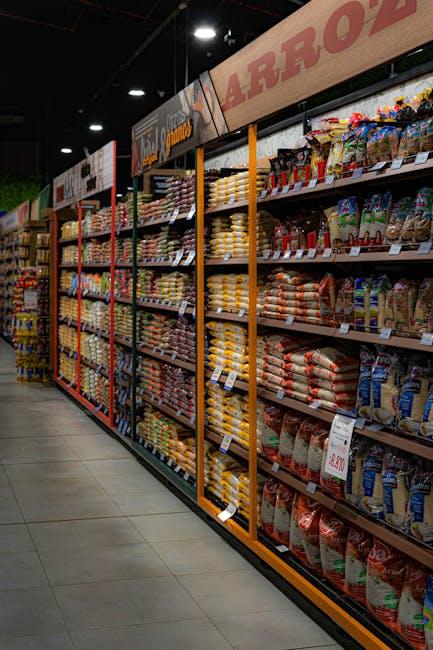In a world where time is often as precious as gold, meal kits have carved out a niche that promises convenience, variety, and culinary adventure right at your doorstep. As we step into 2025, the question lingers: are these pre-portioned packages worth the investment, or do their costs outweigh the convenience they offer? With a myriad of options flooding the market—from gourmet selections to quick-fix dinners—consumers find themselves navigating a landscape that boasts not only innovation but also complexity. In this article,we’ll dissect the value of meal kits through a comprehensive cost vs. convenience breakdown, weighing the benefits against the prices to help you determine if these culinary solutions truly deliver on their promises or if they’re just another trendy illusion.
Evaluating the True Cost of Meal Kits in 2025
In 2025, the landscape of meal kits continues to evolve, making it crucial to assess their real financial implications.While convenience is a major selling point, the true cost of meal kits extends beyond just the prices displayed on the packaging. Here are key factors that contribute to the expense:
- ingredient Quality: Many meal kits pride themselves on using organic or premium ingredients, which can drive up costs considerably.
- Delivery Fees: While some companies may offer free shipping, others rely on delivery fees that can add to your overall expense.
- Portion Control: Depending on household size, meal kits might not fit everyone perfectly, resulting in wasted food or leftovers that don’t get consumed.
To truly understand weather meal kits are a financial burden or a savior, consider the option expense of dining out or purchasing groceries while factoring in time spent prepping and shopping. The following table illustrates a direct comparison of costs:
| Expense | Meal Kits (per meal) | Grocery Shopping (per meal) | Dining Out (per meal) |
|---|---|---|---|
| Average Cost | $10-$15 | $7-$12 | $15-$30 |
| Planning Time | 30-60 min | 60+ min | 20-40 min |
| waste Potential | low | High | None |
The price of convenience appears clear, but it’s essential to evaluate how often meal kits are used and how they fit into your lifestyle. By considering taste preferences, dietary needs, and personal schedules, you can determine if they are genuinely worth the investment in time and money.

The Convenience Factor: How Meal Kits Save Time
One of the primary reasons many people are gravitating towards meal kits is their remarkable ability to streamline meal preparation. By delivering pre-portioned ingredients directly to your door, these kits eliminate a important portion of the time otherwise spent on grocery shopping and meal planning. Consider the following advantages:
- Pre-Planning: Each kit comes with a curated menu, so you can skip the struggle of deciding what to cook
- Efficient Cooking: With minimal prep work, recipes are designed to maximize flavour while minimizing time spent in the kitchen
- Waste Reduction: precise portions mean you’re less likely to overbuy and waste food
To put the convenience of meal kits into viewpoint, here’s a simple comparison of the time spent with and without meal kits:
| Activity | Traditional Cooking | Meal Kits |
|---|---|---|
| Meal Planning | 60 minutes | 0 minutes |
| Grocery Shopping | 30-90 minutes | 0 minutes |
| Prep Time | 30-60 minutes | 15-25 minutes |
| Cooking Time | 30-45 minutes | 20-30 minutes |
| Total Time | 150-255 minutes | 35-55 minutes |
This breakdown illustrates just how much time can be saved each week, allowing you to reclaim valuable hours to invest in other aspects of life, whether it’s family time, personal hobbies, or simply relaxing after a busy day.In a world where time is a precious commodity, the convenience of meal kits presents a compelling case for their popularity.

Nutritional Value vs. Cost: Are You Getting What You Pay For
when considering meal kits, it’s essential to examine their nutritional value alongside the total cost. Many meal kits pride themselves on providing locally sourced ingredients and nutrient-dense meals, which can justify their frequently enough higher price point. Here are some aspects to consider:
- Ingredient Quality: Meal kits typically use fresher,more wholesome ingredients compared to traditional grocery store options.
- Portion Control: Pre-portioned meals reduce the likelihood of overconsumption, aiding in calorie management.
- Diverse Recipes: Meal kits often offer a rotation of recipes, exposing you to a variety of nutrients.
On the flip side, the cost of these meal kits can quickly accumulate over time. it’s crucial to break down their pricing in relation to your grocery expenses to determine if you’re truly getting your money’s worth. The following table illustrates the average cost per serving and its comparison to a traditional grocery shopping trip:
| Meal Type | Average Cost Per Serving | Nutritional Benefits |
|---|---|---|
| Meal Kit | $10 – $12 | Balanced meals with portion control |
| home-cooked (grocery store) | $5 – $7 | Varies, dependent on ingredients chosen |
This comparison highlights a crucial point: while meal kits may promise convenience and certain nutritional benefits, their cost may exceed traditional meal preparation methods, particularly for those who enjoy cooking and meal planning on their own. Evaluating your personal preferences and lifestyle will ultimately guide your decision on whether the extra expense is justified.

Making the Choice: Recommendations for Your Lifestyle and Budget
When considering meal kits, it’s essential to evaluate both your lifestyle and budget to find the best fit for your needs.If you have a busy schedule, meal kits can save precious time by delivering pre-measured ingredients and easy-to-follow recipes straight to your door. this eliminates trips to the grocery store and the time spent planning meals. However, keep in mind that if you enjoy leisurely cooking or experimenting with new recipes, traditional grocery shopping might provide a more satisfying experience. consider your cooking skills and willingness to try new culinary adventures, as meal kits often encourage creativity while simplifying the cooking process.
Budget-wise, meal kits can vary widely in price. To aid in your comparison, here’s a breakdown of factors to consider:
| Factor | Meal Kits | Grocery Shopping |
|---|---|---|
| Average cost per Meal | ~$10-$15 | ~$4-$8 |
| Convenience | High (delivered to your door) | Medium (requires shopping time) |
| Variety | Moderate (limited menu selection) | High (endless options) |
| Prep Time | Less than 30 minutes | Varies greatly |
Ultimately, the choice comes down to personal preference. If you find that the convenience of meal kits fits seamlessly into your hectic life,you may discover that the slight premium is worth it. On the other hand, if you prioritize cost-effectiveness and have the time for grocery shopping and meal prep, you might enjoy the flexibility and savings of the traditional approach. Analyzing these factors will help you make the best decision for your lifestyle and financial situation.
Concluding Remarks
As we draw the curtain on our exploration of meal kits in 2025,it’s clear that the debate over their worth is as layered as the meals they offer. While the convenience of pre-portioned ingredients and curated recipes can save you time and mental energy, the financial implications cannot be overlooked. For some,the ease and variety of meal kits may justify the cost,transforming weeknight dinners into culinary adventures. For others, the price tag may feel like an indulgence too far when compared to home-cooked alternatives.Ultimately, the decision boils down to personal preferences and individual circumstances. Whether you view meal kits as a time-saving marvel or a costly luxury, understanding both sides of the equation will empower you to make the choice that’s right for your lifestyle and budget. So, as you contemplate your next meal planner, remember: in the world of meal kits, the value lies not just in dollars and cents, but in the joy and ease of sharing a table with those you love.Happy cooking!




